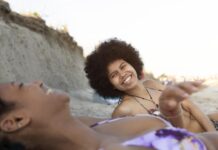
by: Peter Garant
Having a dog is a big responsibility. Some even compare taking care of a dog to that of a baby. The only advantage having dogs compared to having babies is that they won’t grow older and turn into stressful teenagers. Because dogs are like babies they sometimes also end up in harmful situations. They would sometimes get themselves trapped in a tight place or get hit by something that will injure one of their limbs. When that happens, we should learn how to bandage our dogs to prevent further damage. You may even have to bandage up your pet if your dog has allergies as well to stop them from itching and scratching certain areas, making them sore and possibly creating bigger wounds. Here are some basic ways of how to bandage your injured dog.
1. When your pet has a bandage, it should always be clean and dry. So it’s pretty important to make sure your pet stays inside most of the time when it has a bandage. To prevent the bandage from getting wet when the pet goes to pee or poop, a trash bag or plastic covering should cover the bandaged leg. You may use empty bread bags. When your pet has wet or dirtied up the bandage, it would require changing. Make sure to check the bandage twice a day to see if it is clean and dry. Check also for foul odors or discharge and if there is any, call your veterinarian immediately.
2. After bringing home your pet from the veterinarian make sure that the bandage is still in place. Your pet might have been irritated by it and has chewed or tried to scratch it off. Look closely at the position and the location of the bandage when you do check. Look at the toes of the pet, the bandage might have slipped up making the toes stick out. Also look at the size, if the bandage has become loose. This should be taken into account when a dog has been bandaged in the abdomen or leg area. This is because one end will be bigger than the other and eventually become narrower. When the bandage telescopes down the limb of the dog it may bunch up and abrade the limb. When that happens, the bandage should be changed as well.
3. If the dog is bandaged up in the leg make sure it isn’t too tight. Observe how the toes will appear at the bottom of the bandage at least twice a day. This is done to check for sweating, swelling, or pain. It’s not uncommon for your dog to experience discomfort after an injury. In some cases, it could have an effect on their lives; they may be less lively or they may struggle to walk. No dog owner wants to see their furry friend in pain, so that’s why many decide to have a look at somewhere like CBD Dog Health, (https://cbddoghealth.com/) to see how this treatment could be beneficial to their symptoms. But of course, making sure that you keep an eye on the bandage and their toes can help you to detect any noticeable problems yourself. Check for skin chaffing, redness, discharge or swelling before and after the bandage has been applied.
4. To prevent your pet from chewing the bandage, consider using an Elizabethan collar. If you have observed that your pet is chewing or scratching it excessively, ask the vet if there might be other problems. Your pet might then have to undergo a veterinary ultrasound scan to determine whether any other issues might be contributing towards the discomfort your pet is experiencing.
These are the times that you should already be taking your pet back to the veterinarian:
• Swelling above or below the bandage
• Chewing the bandage
• Bandage becomes wet
• Bleeding or discharge above, below or through the bandage
• Scheduled bandage changes



































